PROJECT TYPE: EDUCATIONAL SPRINT PROJECT
DURATION: 1 WEEK, NOV, 2020
CLIENT: SHOPIFY
TEAM: ME, LATICIA, MATT, PABLO (4 PRODUCT DESIGNERS)
CHALLENGE
Despite the number of online shoppers continuing to rise, many consumers still prefer to shop in-store, because e-commerce capabilities do not replicate the sensory experience consumers want during their purchase decision process. We excepted this challenge from the Shopify team of How might we so that consumers around the world can have enriched experiences like they may get in-store?
KEY RESEARCH FINDINGS
After reviewing our client’s brief we did secondary research to understand the behaviours of our target audience North American shoppers and we found that :

GOAL
This leads us to our goal that we want to accomplish which is to make online shopping for clothing a more entertaining and immersive experience.
ASSUMPTION
After we identified our project goal we start to brainstorm some assumptions of what has to be true if we want to achieve our project goal. Some of the assumptions we came up with are:
- The sensorial shopping experience can be transformed into digital.
- Consumers want a meaningful experience when choosing their outfits.
- They want to know what goes behind the outfit they bought. such as materials and labour.
- A more immersive and entertaining experience will drive website views and therefore more business.
USER INTERVIEW INSIGHTS
To validate our assumptions and to better understand the needs of the targeted audience we found 6 interviewees that fit our criteria which are aged 25-54 who live in North America and are experienced with online shopping. After, we categorized the interview insights into Behaviour, Motivation, pain points and then group them into 3 themes.
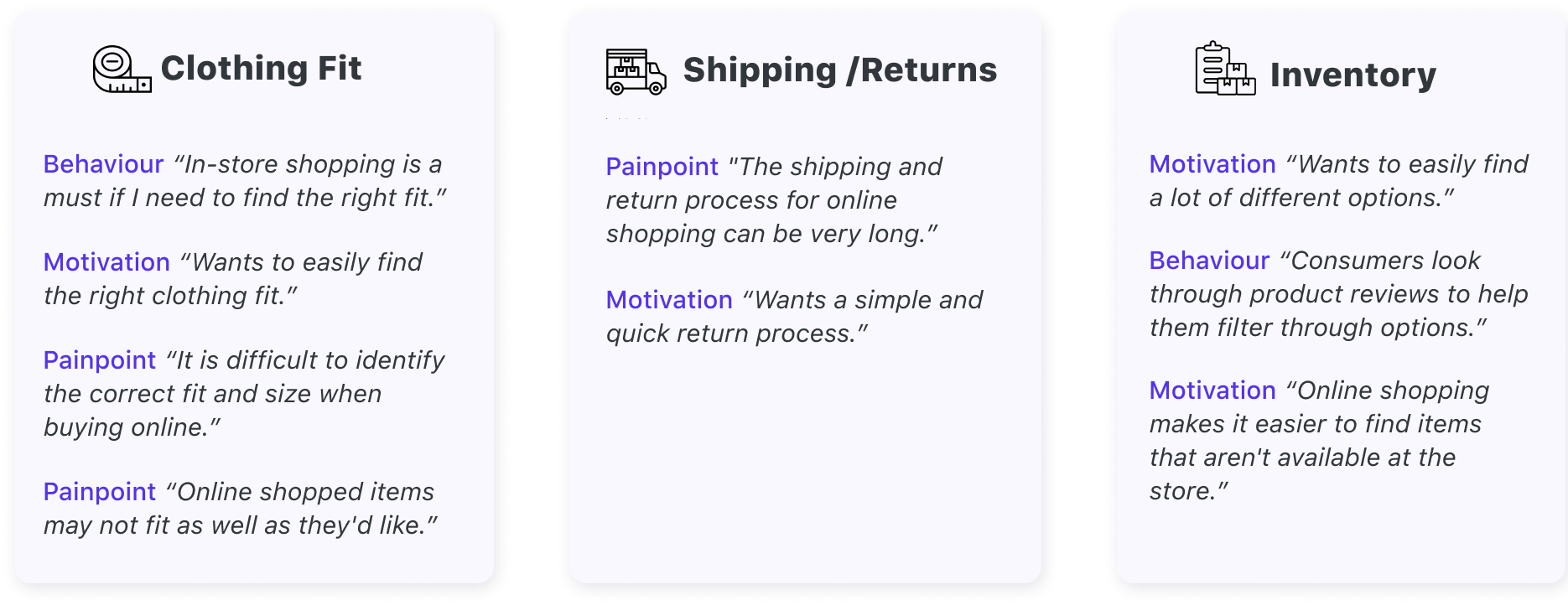
How Might We utilize technology to give experienced online shoppers a better understanding of the fit of the clothing they are purchasing, so that they can accurately identify their correct size?
PERSONA
We then came up with this persona with the user's pain points and goals in mind to guide us answer our how might we question above.

SOLUTION
What if?
We choose the fitting room feature to solve the user’s issue of not able to try on clothes online. we did some research to find inspirations and thought, what if users are able to try on clothes virtually in the app?
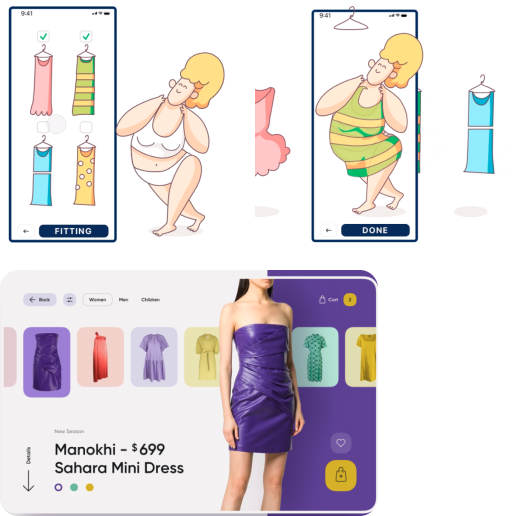
Of course!
We came up with this idea of using face scan technology and input data of body measurement to create an avatar of yourself and then you are able to try on clothes virtually in our virtual fitting room.
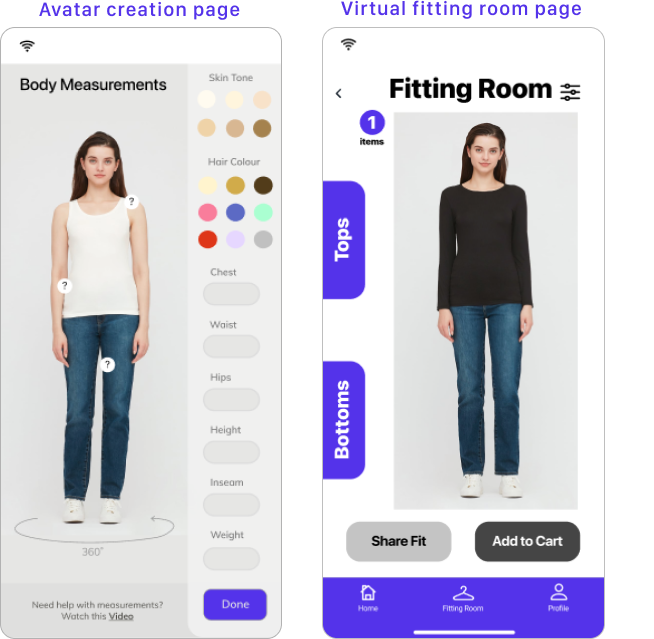
SKETCHES AND WIREFRAMES
After coming up with the idea of creating an avatar of yourself to try on clothes in the virtual fitting room we started to create sketches to show the overall structure and layout of this product, then translated it into wireframes which will be used for testing with the users.

USER TESTING AND ITERATION
During our testing sessions, we asked 6 person who fits our target audience criteria about how would they use this product to create an avatar of themselves and then purchase a top that they have tried on in the virtual closet. The following screens are examples of where users had issues. V1 is the screen we tested and V2 is after iteration.
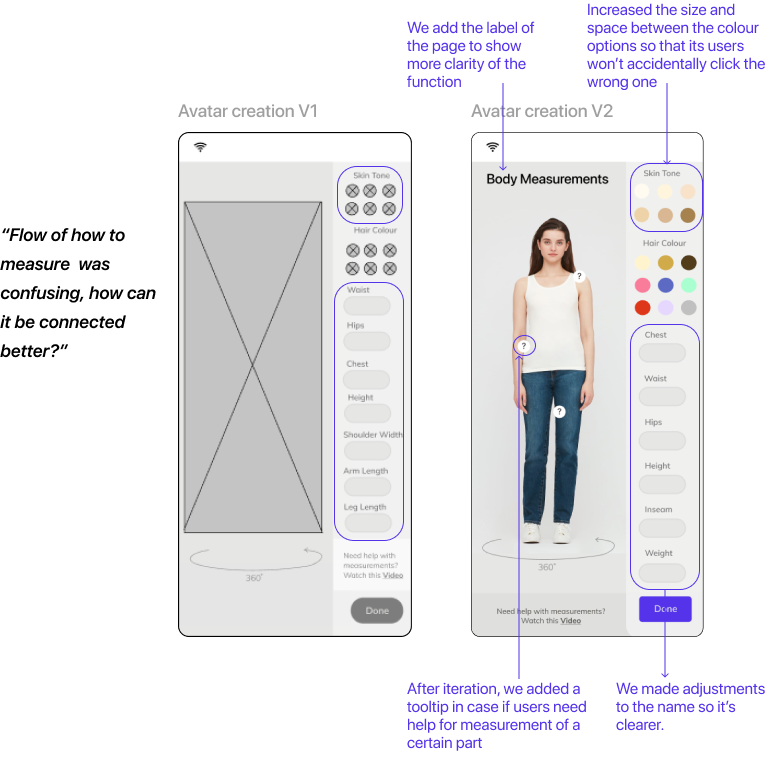
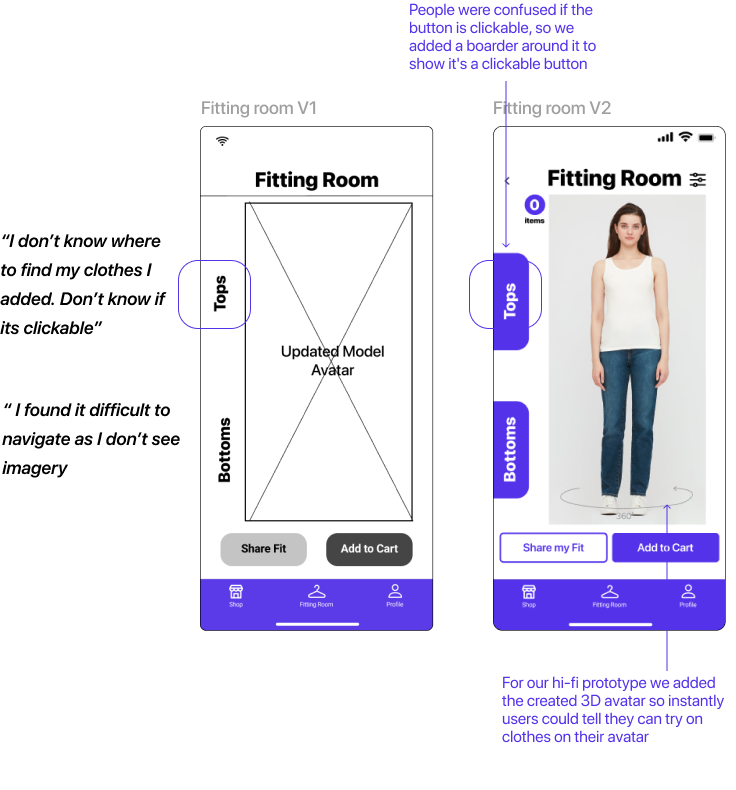
HI-FI PROTOTYPE
After iteration, we have injected the brand colour into the product and the following are the main screens of this product and a description of its function.

SUCCESS METRICS

NEXT STEP
- Complete further user testing in hi-fi prototypes.
- Handoff to developers for implementation.
- Launch in the Shopify App Store, integrate with Shop Pay.
- Using a phone camera for measurements.
KERY LEARNING
Abundance of design intervention opportunities within e-commerce and apparel.
Explore the world of AR, VR, and 3D-Modelling.
Prioritizing and focusing on the main tasks.
Tying it back to the persona and the problem space.
Let's Connect


